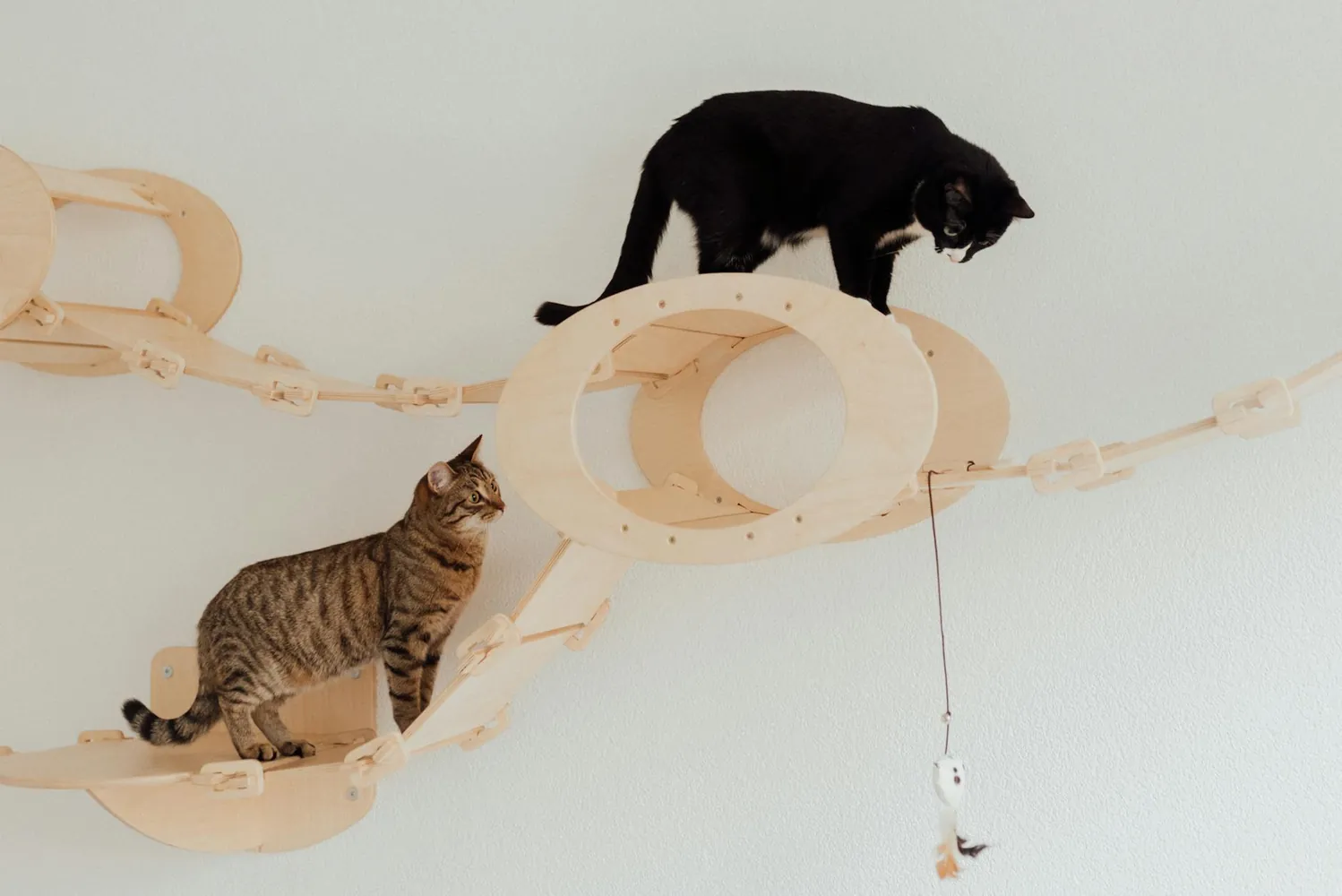Interactive Play Techniques That Promote Healthier Indoor Cats

Why Interactive Play is Essential for Indoor Cats
Indoor cats often face a unique set of challenges compared to their outdoor counterparts. While they may be safer from the hazards of the outside world, such as traffic or predators, they are also at risk of becoming bored and under-stimulated. Lack of physical and mental engagement can lead to health issues such as obesity, anxiety, and even depression. Interactive play is a vital component in ensuring that indoor cats remain healthy, active, and happy.
Not only does interactive play provide essential exercise to help maintain a healthy weight, but it also stimulates a cat’s natural hunting instincts, giving them the opportunity to explore, problem-solve, and engage in behaviors that come naturally to them.
Understanding Your Cat's Natural Instincts
Cats are innate hunters, and even domesticated cats have retained many of these instincts. Recognizing and embracing these instincts can make interactive play more effective. For example:
- Stalking: Many cats enjoy sneaking up on their toys before pouncing. Try moving toys slowly or hiding them behind objects.
- Chasing: Toys that move erratically or quickly can mimic the behavior of prey.
- Pouncing: Encouraging a cat to leap for a toy helps strengthen muscles and coordination.
Building an Enriching Environment
An enriched environment will not only keep your cat entertained but also improve their quality of life. Here are some tips to build such an environment:
- Vertical Spaces: Cats love to climb. Consider installing shelves or cat trees to give them higher vantage points.
- Window Perches: Place a perch near a window so your cat can watch birds or passing cars.
- Variety of Textures: Different materials can pique your cat's interest. Provide scratching posts made of sisal, carpet, or wood.
Puzzle Feeders: A Meal with a Challenge
Puzzle feeders are an excellent way to combine feeding time with playtime. These devices require cats to work for their food, stimulating their problem-solving skills and mimicking the challenge of hunting in the wild.
How to Implement Puzzle Feeders
- Start Simple: Begin with easier puzzles to ensure your cat does not become frustrated.
- Incorporate Daily Meals: Use puzzle feeders during regular feeding times to make this part of your cat's routine.
- Rotate Puzzles: Change the type of puzzle regularly to keep your cat engaged.
Puzzle feeders come in various designs. Some dispense dry kibble when batted with a paw, while others might require more complex maneuvers to release treats.
The Role of Interactive Toys
Interactive toys are fundamental tools for engaging your cat’s mind and body. They mimic prey through movement or sound, encouraging natural hunting behaviors.
Selecting the Right Toys
- Feather Wands: These toys replicate the flight patterns of birds and are excellent for high-energy play sessions.
- Laser Pointers: This simple tool can provide vigorous exercise but should be used cautiously to avoid frustration (always end sessions with catching a tangible toy).
- Electronic Toys: Automatic moving toys can engage your cat when you're busy, though supervision is recommended.
Creating a Routine
Cats thrive on routine, so scheduling regular playtimes can help manage their energy levels and reduce unwanted behaviors like scratching furniture or excessive meowing.
A Practical Play Routine
Create two or three short play sessions each day, tailored around your schedule. This consistency helps your cat anticipate when it's time for play:
- Morning Session: A quick session with a wand toy can burn off morning energy.
- Lunchtime Break: Use puzzle feeders or treat balls to provide midday enrichment while you’re occupied.
- Evening Fun: A longer session incorporating different toys allows for more intense exercise before settling down for the night.
Encouraging Independent Play
While interactive play with humans is crucial, providing options for independent play ensures that your cat remains engaged even when alone. This can include setting out boxes, paper bags, or tunnels that they can explore independently.
D.I.Y. Cat Toys
You don’t always have to buy toys; homemade options can be just as effective:
- Paper Towel Rolls: Fill with kibble and fold the ends over for an easy puzzle toy.
- Sock Toys: Fill a sock with catnip and tie it off for a quick plush toy.
The Benefits of Social Interaction
Cats are social creatures and benefit greatly from interaction with their human companions. Beyond play, simple things like talking to your cat, petting sessions, or grooming can strengthen the bond between you and your feline friend.
Understanding Cat Communication
- Body Language: Learn to recognize signs of excitement or overstimulation such as dilated pupils or tail flicking.
- Vocalizations: Pay attention to different meows; some may indicate playfulness while others signal a desire for rest or feeding.
Troubleshooting Common Play Issues
If your cat is not engaging in play as expected, consider these potential solutions:
- Boredom with Toys: Regularly rotate toys to keep their interest piqued.
- Lack of Interest in Play: If your cat seems uninterested, try varying the type of play or introduce new types of toys.
A Mini-Framework for Interactive Play
This simple framework can help guide you in setting up successful interactive play sessions for your indoor cat:
- Assess Your Cat’s Preferences: Observe what types of toys and activities they prefer.
- Create an Enriched Environment: Set up spaces and toys that encourage exploration and movement.
- Schedule Consistent Play Sessions: Incorporate regular daily playtimes that suit both you and your cat’s schedule.
- Add Variety: Regularly introduce new toys or activities to keep things fresh.
